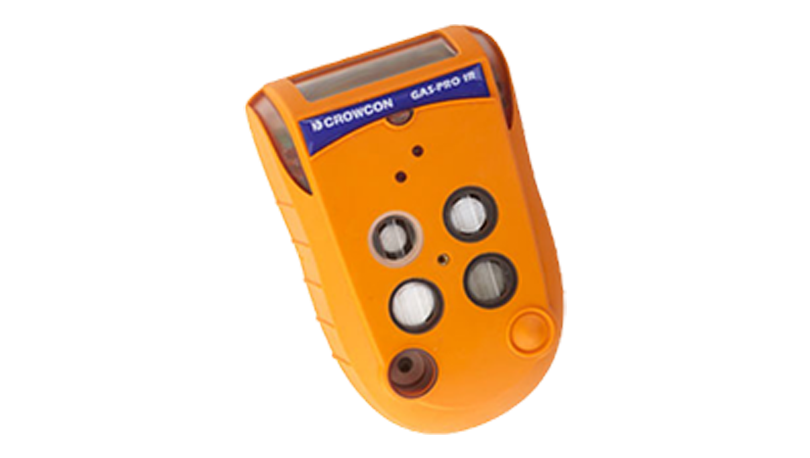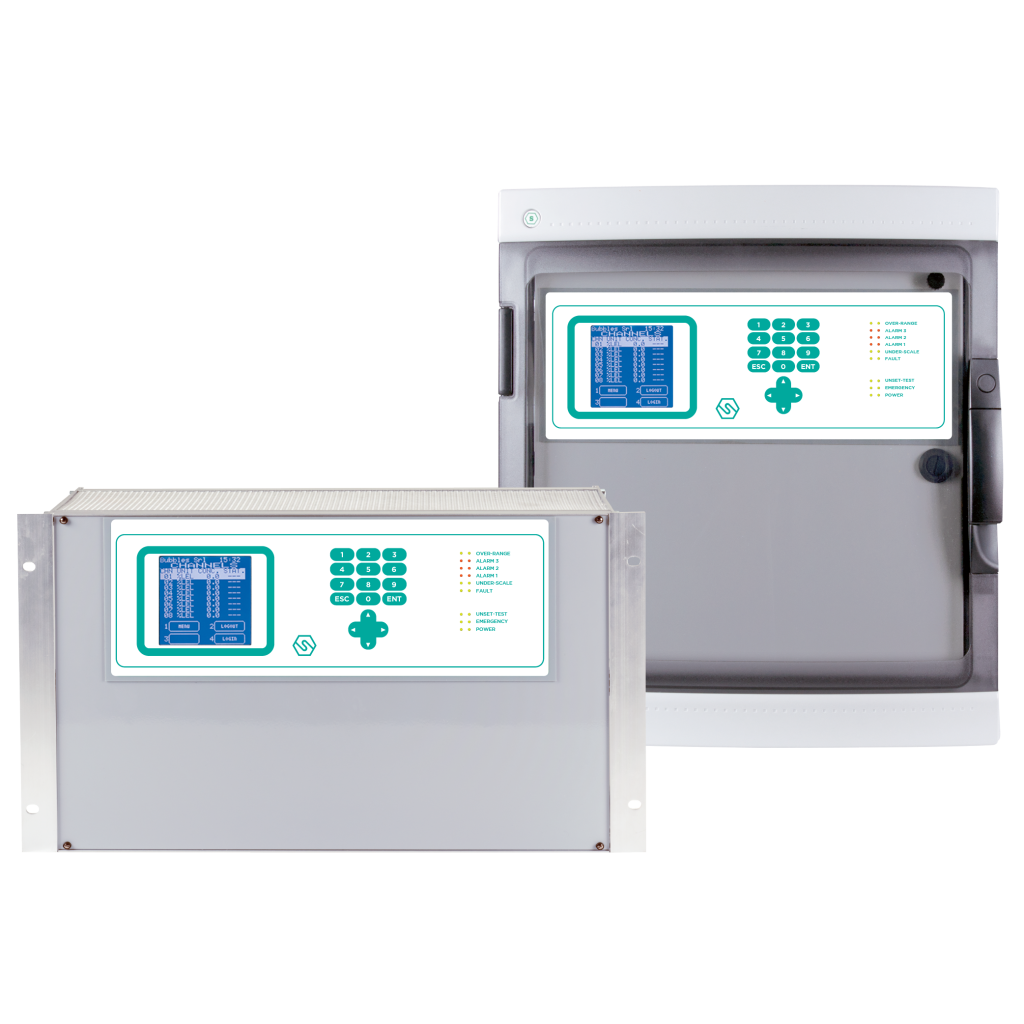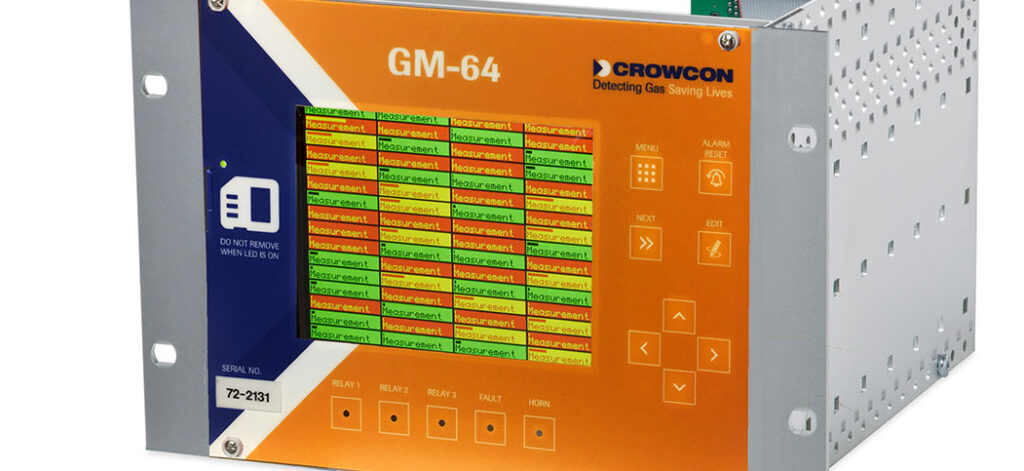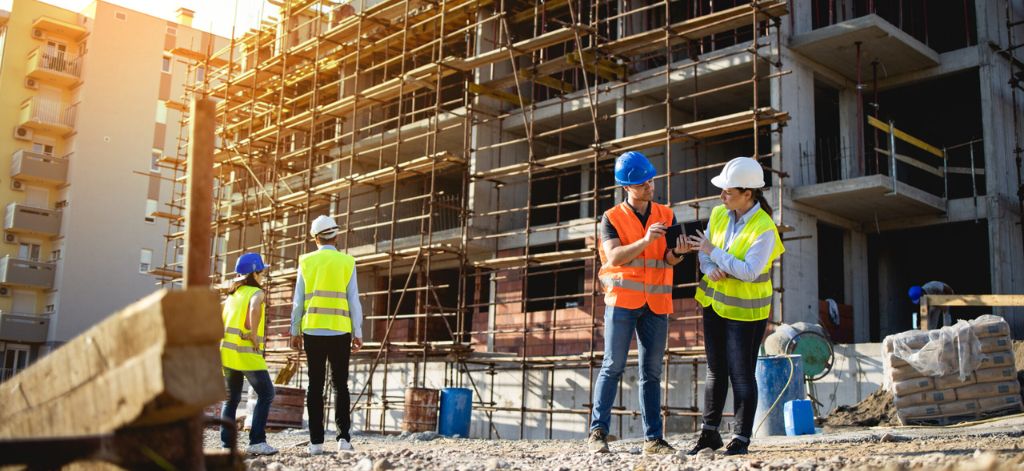
Industrie générale
De l'industrie pharmaceutique à l'industrie minière et sidérurgique, l'industrie en général est confrontée à une pléthore de risques liés aux gaz dangereux qui constituent un danger pour la vie et les biens. En tant qu'experts en détection de gaz depuis de nombreuses années, il n'y a pas une industrie avec laquelle nous n'avons pas travaillé pour améliorer la sécurité et atténuer les risques liés aux gaz et aux incendies. Que vous fabriquiez des produits chimiques ou que vous travailliez dans des usines de frittage, nous pouvons vous aider à assurer votre sécurité et celle de votre personnel.
Risques liés aux gaz dans l'industrie en général
Qu'il s'agisse du risque de déplacement d'oxygène dû à des fuites de méthane ou d'azote, ou de l'atténuation des risques d'incendie et d'explosion liés aux produits chimiques combustibles, il existe une vaste gamme de dangers liés aux gaz et aux flammes dont il faut tenir compte dans l'industrie en général. Heureusement, grâce à une surveillance attentive et à la mise en place de protocoles de sécurité, ces lieux de travail peuvent être sécurisés et les risques de dommages minimisés. Nous examinons ici quatre secteurs d'activité plus en détail afin de mettre en évidence les risques spécifiques et la manière dont ils peuvent être gérés.
L'exploitation minière est une industrie notoirement dangereuse, le risque d'exposition au monoxyde de carbone (CO) et au méthane (CH4) ainsi que le manque d'oxygène ayant coûté la vie à d'innombrables personnes au cours des siècles.
Le méthane emprisonné dans les veines de charbon est libéré directement au cours du processus d'extraction du charbon, et il est ensuite diffusé dans l'air de la mine. Incolore et inodore, le méthane est hautement inflammable. Sans avertissement de sa présence, les travailleurs sont exposés à des risques d'incendie et d'explosion, ainsi qu'à l'asphyxie.
De même, le monoxyde de carbone est un risque courant lors du processus d'oxydation des mines de charbon et de bois. Tout aussi indétectable par les sens humains, le monoxyde de carbone provoque une intoxication chez les personnes exposées, qui se traduit par des vertiges, une faiblesse, des maux d'estomac, des vomissements, des maux de tête, des douleurs thoraciques et de la confusion. À des concentrations élevées, le CO peut entraîner une perte de conscience ou, pire encore, des décès.
En raison de ces risques, des méthodes rudimentaires de contrôle des gaz ont été mises en place pendant des siècles, avec l'utilisation de canaris chantants et de mèches de méthane pour détecter les gaz dangereux. Heureusement, nous disposons aujourd'hui de méthodes de test beaucoup plus efficaces, avec des détecteurs de gaz fixes et portables pour contrôler la qualité de l'air, afin de protéger vos travailleurs - et vos canaris - de tout danger.
CANDIDATURES
Les opérations d'extraction de l'or impliquent souvent l'utilisation de produits chimiques toxiques tels que le cyanure, ainsi que des processus qui libèrent des gaz dangereux, tels que le dioxyde de soufre (SO2) lors du grillage ou de la fusion du minerai. Il est essentiel de surveiller ces vapeurs et gaz toxiques pendant le traitement du minerai, ainsi que la présence de gaz inflammables comme le méthane (CH4) afin d'éviter les explosions.
Cette méthode est couramment utilisée pour le charbon, mais elle peut également s'appliquer à d'autres matériaux tels que le gypse ou le sel. Les espaces confinés que cela implique naturellement rendent vitale la surveillance de l'oxygène, ainsi que la détection des niveaux de méthane qui posent un risque d'inflammabilité. Le monoxyde de carbone (CO) et le sulfure d'hydrogène (H2S) sont aussi souvent des sous-produits du processus d'extraction et peuvent provoquer l'asphyxie, d'où l'importance de la surveillance et d'une ventilation adéquate.
Dans ces deux applications, les émissions de gaz dans les zones remblayées et là où de grandes sections de veines (souvent de charbon) sont coupées, il est essentiel d'optimiser la ventilation et de prévenir l'accumulation de gaz toxiques (tels que le monoxyde de carbone) dans les espaces confinés. Cependant, la détection précoce des incendies est également importante, car l'équipement minier génère de la chaleur qui, combinée au méthane ou à la poussière de charbon, peut créer un risque de combustion important.
Le dégagement de gaz toxiques lors du dynamitage et de la spéléologie, tels que le méthane, le dioxyde d'azote (NO2) et le sulfure d'hydrogène, présente des risques importants, d'où l'importance de la détection de ces gaz et de la surveillance de la qualité de l'air. Il est essentiel de veiller à ce que ces détecteurs soient également résistants à la poussière, car de nombreux détecteurs peuvent être altérés par des environnements très poussiéreux.
Lorsque de grands volumes de minerai s'effondrent, du gaz piégé dans des fractures ou des poches peut être libéré. Les systèmes de détection de gaz surveillent la présence de méthane, deCO2 et d'autres gaz nocifs susceptibles de s'échapper lors de l'extraction du minerai. Tout comme la spéléologie souterraine, la spéléologie de bloc libère une quantité importante de poussière et de particules, qui peuvent obscurcir la visibilité et affecter la qualité de l'air. Assurez-vous que vos détecteurs de gaz fonctionnent correctement, même dans des environnements chargés de poussière.
Les gaz que l'on trouve dans l'industrie chimique sont très variés, en raison de la prédominance de matières dangereuses organiques et inorganiques ayant un point d'éclair bas, une faible LIE (la concentration la plus faible d'un gaz ou d'une vapeur dans l'air qui brûlera avec une source d'inflammation) et une large gamme d'explosifs. Bien que les produits et sous-produits de l'industrie soient vitaux pour d'innombrables industries dans le monde, ils peuvent être parmi les plus dangereux à travailler directement, ce qui rend les systèmes de détection de gaz efficaces et fiables non négociables.
L'industrie chimique présente plusieurs risques liés aux gaz, notamment le rejet de gaz toxiques, inflammables et réactifs pendant la production, le stockage et le transport. Les risques les plus courants concernent l'exposition à des gaz tels que l'ammoniac, le chlore et le sulfure d'hydrogène, qui peuvent être nocifs ou mortels à des concentrations élevées. Les fuites et les rejets accidentels posent des risques d'explosion, en particulier avec les gaz inflammables, mais l'entretien des sites chimiques présente des risques supplémentaires, le travail à chaud et les espaces confinés ajoutant une couche supplémentaire aux risques.
L'entretien et la réparation d'espaces et d'installations dans l'industrie chimique peuvent nécessiter l'utilisation d'équipements de soudure dans des zones à haut risque de combustion, tandis que les espaces confinés mal ventilés tels que les silos, les colonnes et les réservoirs doivent être régulièrement nettoyés. Les permis de travail à chaud, les contrôles préalables à l'entrée, la détection efficace des gaz, la surveillance et les protocoles de sécurité sont essentiels pour protéger les travailleurs de ces dangers et garantir un environnement de travail sûr.
CANDIDATURES
Les produits chimiques tels que le chlore (Cl2), l'ammoniac (NH3), le dioxyde de soufre (SO2) et le sulfure d'hydrogène (H2S) sont courants dans les processus de production, tandis que les gaz inflammables tels que le méthane (CH4), l'hydrogène (H2), l'acétylène (C2H2)et les composés organiques volatils (COV) peuvent fuir au cours de la production. Des fuites peuvent également se produire dans les réacteurs chimiques et les pipelines, d'où l'importance de la détection des gaz tout au long du processus de production, afin de se prémunir contre les risques liés aux gaz et aux incendies.
Les gaz ou les produits chimiques volatils stockés dans des conteneurs, des réservoirs ou des silos peuvent présenter des risques importants s'ils ne sont pas correctement surveillés. La détection des gaz dans les installations de stockage de produits chimiques est essentielle pour identifier les fuites potentielles, contrôler les niveaux d'oxygène et surveiller les réactions chimiques éventuelles.
Lors du transport et de la distribution de produits chimiques, des fuites et des déversements peuvent se produire, en particulier lors du transfert de gaz ou de liquides volatils entre des conteneurs. La détection de gaz joue un rôle essentiel dans la sécurité de la manipulation des produits chimiques pendant la distribution, en particulier dans les moments dangereux tels que le chargement et le déchargement, où les fuites de gaz toxiques ou inflammables aux points de connexion et aux vannes sont les plus probables.
Les procédés chimiques produisent souvent des sous-produits gazeux qui peuvent être dangereux, toxiques ou inflammables. La détection des gaz permet de repérer les sous-produits dangereux tels que les oxydes de soufre (SOx) et les COV, ce qui garantit une capture et un traitement sûrs, ainsi que le respect des réglementations environnementales.
La gamme variée d'applications et de processus dans le secteur de l'acier crée une variété de niveaux de gaz potentiellement dangereux, y compris le dioxyde de soufre, le monoxyde de carbone, le dioxyde de carbone, l'hydrogène, l'azote et l'appauvrissement en oxygène.
En raison de la présence et de l'émission de nombreux gaz dangereux, de la poussière et des conditions de travail chaudes, le secteur de l'acier présente de nombreux risques liés aux gaz, en particulier dans les zones de four, les fosses et les passages souterrains.
Un équipement de détection des gaz doit être mis en place pour assurer la sécurité des équipes et les sensibiliser aux dangers qui surviennent et fluctuent. Une surveillance précise permet également d'éviter la contamination des détecteurs, les fausses alarmes et de réduire les temps d'arrêt, tout en garantissant la conformité avec les limites d'exposition professionnelle requises.
Le broyage des métaux et des métaux non ferreux dans la production d'acier produit des poussières ferreuses granuleuses qui peuvent poser des problèmes à certains détecteurs de gaz, en empêchant les gaz d'atteindre le détecteur et en faussant les relevés. Les filtres amovibles qui peuvent être nettoyés et remplacés garantissent que le gaz atteint clairement le capteur.
CANDIDATURES
Les usines de frittage traitent les minerais de fer fins en les chauffant pour créer de plus grosses particules ou "frittes", qui peuvent être utilisées dans les hauts fourneaux. La détection des gaz est essentielle dans ces opérations en raison des gaz générés pendant le processus de frittage, tels que le monoxyde de carbone (CO), le dioxyde de soufre (SO2) et les oxydes d'azote (NOx).
Les hauts fourneaux sont utilisés pour convertir le minerai de fer en fer fondu à l'aide de températures élevées et de gaz réducteurs. Ces opérations font intervenir des gaz dangereux, ce qui rend la détection des gaz essentielle pour éviter les empoisonnements et les explosions, et garantit une réutilisation sûre des gaz de hauts fourneaux.
Les cokeries produisent du coke à partir du charbon en le chauffant en l'absence d'air, un processus connu sous le nom de pyrolyse, et qui est essentiel pour le processus du haut fourneau. Les gaz toxiques et inflammables générés, tels que le méthane, l'hydrogène, le benzène et les composés sulfurés (H2S, par exemple), doivent être surveillés de près afin d'éviter les expositions toxiques et les incendies.
Le moulage consiste à verser du métal en fusion dans des moules pour former des produits en acier. Au cours de ce processus, des fumées nocives telles que le monoxyde de carbone et le dioxyde de carbone peuvent être libérées, ainsi que d'autres particules dangereuses. Il est donc essentiel de surveiller attentivement la qualité de l'air pour préserver la santé des travailleurs.
La production de fer implique l'extraction et la transformation du minerai de fer en fer fondu, qui est ensuite utilisé pour produire de l'acier. La détection des gaz est essentielle pour gérer les risques associés à la libération de gaz dangereux, tels que la détection du CO, du SO2, du NOx et du sulfure d'hydrogène (H2S) pendant le traitement du minerai de fer, afin de protéger les travailleurs et de respecter les réglementations environnementales.
Des compléments alimentaires aux traitements révolutionnaires des maladies chroniques et aiguës, l'industrie pharmaceutique développe et fabrique une large gamme de produits et fait appel à un vaste réseau de fournisseurs et de sociétés de distribution.
La fabrication de produits pharmaceutiques implique de multiples opérations unitaires dangereuses, depuis la synthèse des ingrédients pharmaceutiques actifs (IPA) jusqu'aux opérations de traitement telles que le broyage, le mélange, la granulation et le séchage. Les solvants et les IPA utilisés dans la production pharmaceutique sont généralement très toxiques, et une exposition prolongée à certains IPA peut entraîner des effets chroniques sur la santé, voire la mort. Ils présentent également un risque d'incendie et d'explosion, car l'exposition à des produits chimiques et à des solvants inflammables est l'un des risques les plus courants dans la fabrication de produits pharmaceutiques, et le stockage de solides combustibles et de liquides inflammables présente également des risques d'incendie.
L'azote est également souvent utilisé sur les sites pharmaceutiques et, en cas de fuite d'azote liquide, il se dilate rapidement et déplace l'oxygène dans la zone environnante, ce qui, dans un espace confiné, peut s'avérer fatal. L'azote étant un gaz inerte, la détection d'un manque d'oxygène est une meilleure indication du risque que la seule détection de l'azote.
CANDIDATURES
Les systèmes de détection de gaz sont essentiels dans l'industrie pharmaceutique pour garantir la sécurité de la manipulation, du stockage, de la recherche et de la production de produits chimiques. Les principales applications sont les suivantes :
De nombreux produits chimiques pharmaceutiques sont stockés sous forme de gaz ou de liquide dans des conteneurs pressurisés. Les systèmes de détection de gaz surveillent les fuites de gaz toxiques ou inflammables, tels que l'ammoniac (NH3), le chlore (Cl2) et les solvants comme l'acétone ou l'éthanol, qui peuvent présenter des risques d'incendie et des risques pour la santé. La détection des gaz joue également un rôle essentiel dans le suivi des émissions de COV et dans le respect des réglementations environnementales.
Dans la recherche et le développement pharmaceutiques, les laboratoires manipulent une grande variété de produits chimiques dans des environnements contrôlés. Les salles blanches doivent respecter des normes strictes de qualité de l'air afin d'éviter toute contamination, ce qui rend la détection des gaz essentielle. De même, la recherche implique souvent l'expérimentation de gaz potentiellement dangereux ou de produits chimiques volatils, ce qui rend la ventilation adéquate et le maintien de la qualité de l'air vitaux pour le bien-être des travailleurs.
Le nettoyage est un élément essentiel de la fabrication et de la recherche pharmaceutiques afin de maintenir des conditions stériles et de prévenir la contamination. De nombreux agents de nettoyage libèrent des gaz qui doivent être surveillés de près, comme l'acide peracétique (PAA) et le peroxyde d'hydrogène, qui sont couramment utilisés dans l'industrie pharmaceutique pour le nettoyage des équipements et des surfaces. Le suivi de la qualité de l'air est particulièrement important dans les espaces confinés ou fermés où les produits de nettoyage doivent être utilisés.
Le moulage consiste à verser du métal en fusion dans des moules pour former des produits en acier. Au cours de ce processus, des fumées nocives telles que le monoxyde de carbone et le dioxyde de carbone peuvent être libérées, ainsi que d'autres particules dangereuses. Il est donc essentiel de surveiller attentivement la qualité de l'air pour préserver la santé des travailleurs.
Dans la fabrication de produits pharmaceutiques à grande échelle, les processus impliquent souvent la manipulation de produits chimiques, de solvants et de gaz qui peuvent présenter des risques s'ils ne sont pas correctement contrôlés. Les systèmes de détection de gaz sont essentiels pour contrôler les vapeurs de solvants, l'accumulation deCO2, l'ammoniac et les COV afin de prévenir l'exposition toxique, les risques d'incendie et d'assurer la conformité environnementale.
Détecteurs pour l'industrie générale
Détection de gaz portable
Détection fixe de gaz
Panneaux de contrôle
Articles connexes
Vous souhaitez vous adresser à des experts ?
Personne ne comprend mieux que notre équipe à quel point les bonnes solutions de détection sont importantes pour vous et votre site. C'est pourquoi nous sommes toujours à votre disposition pour discuter de vos besoins en matière de détection de gaz, afin de vous assurer que vous disposez des outils adéquats pour assurer la sécurité de votre personnel et de vos biens.
En savoir plus sur la politique de Crowcon en matière de Politique en matière de confidentialité et de cookies ici. Si vous changez d'avis, vous pouvez vous désinscrire à tout moment.
























